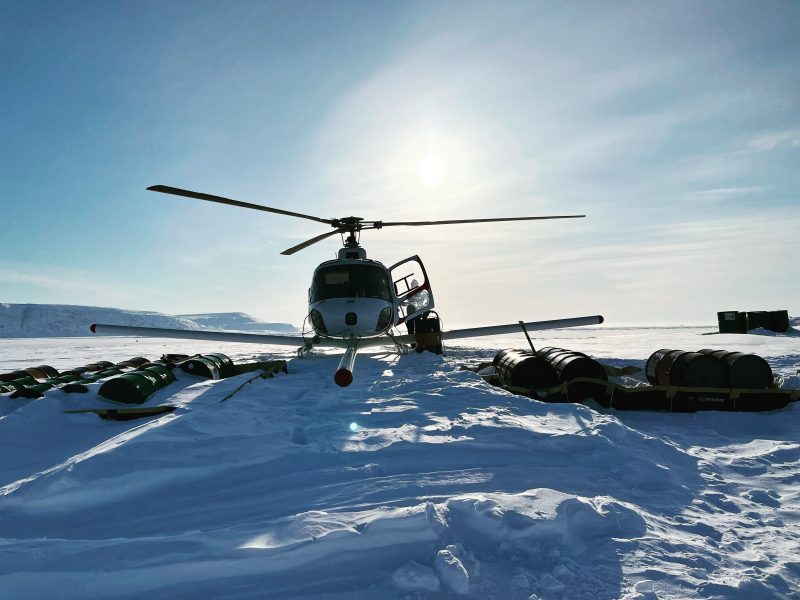Probing Ice Sheets on Earth and Europa
December 12, 2023

A radar technique developed by scientists at the University of Texas Institute for Geophysics (UTIG) could be used to investigate melting glaciers on Earth as well as detect potentially habitable environments on Jupiter’s moon Europa. The research was published in May 2023 in the journal The Cryosphere.
The near-surface layers of ice sheets are difficult to study with traditional airborne or satellite ice-penetrating radar, but this new technique allows them to image hidden features within the upper few feet of ice sheets.
The researchers tested the technique by flying radar surveys over the Devon Ice Cap in the Canadian Arctic, mapping a slab-like layer of impermeable ice near the surface. The analysis suggested that the ice layer redirects surface melt from the ice cap’s snow-packed surface into water channels downhill.
According to Kristian Chan, a graduate student at the Jackson School of Geosciences who devised the technique, the findings about the ice slab layer could help scientists predict the future of the ice cap and its contribution to sea level rise. Additionally, Chan said the technique could be applied to ice-covered “ocean” worlds like Jupiter’s moon Europa.
In fact, Chan is part of a UTIG group that has developed an ice-penetrating radar instrument called REASON, which will launch aboard NASA’s Europa Clipper in 2024. The instrument will probe Jupiter’s icy moon Europa, looking for clues about whether its ocean or ice shell could harbor life. Chan’s technique allows REASON to target the upper few feet of Europa’s ice shell, where frozen brines or cryovolcanic remnants might be found. Those are of interest to scientists because they are good spots to look for signs of habitable environments that are near enough to the surface to be accessed by future landers.
The research was supported by the NASA Texas Space Grant Consortium at UTIG and the G. Unger Vetlesen Foundation.
Back to the Newsletter